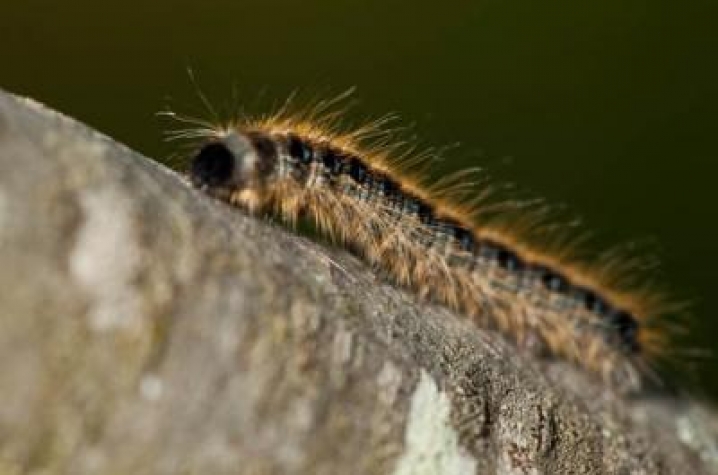Eastern Tent Caterpillars on the Move in Central Kentucky

LEXINGTON, Ky. (May 9, 2014) — Eastern tent caterpillars in Central Kentucky are mature, have dispersed from trees and are on the move, leading experts to advise horse farm managers to move pregnant mares, if practical, to avoid contact with the crawling caterpillars.
According to Lee Townsend, University of Kentucky College of Agriculture, Food and Environment extension entomologist, populations are up in Central Kentucky this year.
“Mature eastern tent caterpillars leave trees in search of protected pupation sites, where they will spin cocoons and transform into adults. This dispersal is a normal part of their life cycle,” Townsend said. “These wandering caterpillars may move several hundred feet from the trees where they developed. The direction of travel tends to be random and directly related to air and ground temperatures. Movement will be slower when temperatures are cool and faster when they arewarm. The caterpillars wander for a period of time until internal hormones signal that it is time to stop and pupate.”
According to Townsend, wandering caterpillars orient to dark, vertical objects so they will often climb treetrunks and fence posts. Check fence posts and rails to monitor caterpillar movement. If caterpillars are around, they are likely to be on these objects. Activity is expected for the next two weeks.
“Insecticides are not very effective against large, dispersing caterpillars. They feed very little, ifany, so they are not going to consume treatments and little insecticide is picked up from treated grass or bare ground. Direct treatment of caterpillars may provide some control, but the effect is usually delayed,” he said.
The eastern tent caterpillar is active early each spring. It is an important insect in horsecountry due to its role in Mare Reproductive Loss Syndrome, which resulted in staggering losses of foals in the 1999-2001 outbreak. MRLS can cause late-term foal losses, early- and late-term fetal losses and weak foals. Subsequent studies by UK researchers revealed that horses will inadvertently eat the caterpillars, and the caterpillar hairs embed into the lining of the alimentary tract. Once that protective barrier is breached, normal alimentary tract bacteria may gain access to and reproduce in sites with reduced immunity, such as the fetus and placenta.
MEDIA CONTACT: Holly Wiemers, 859-257-2226.




